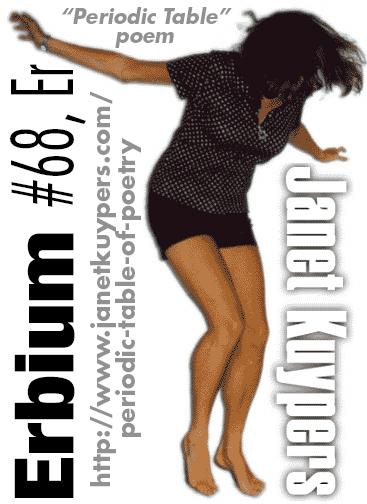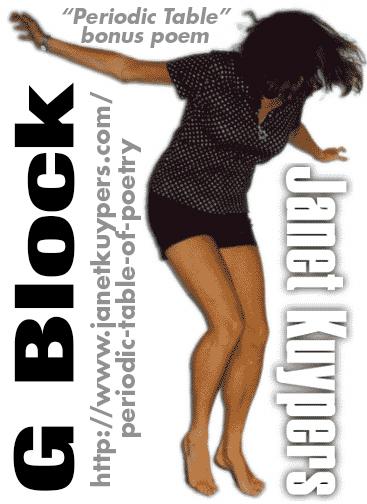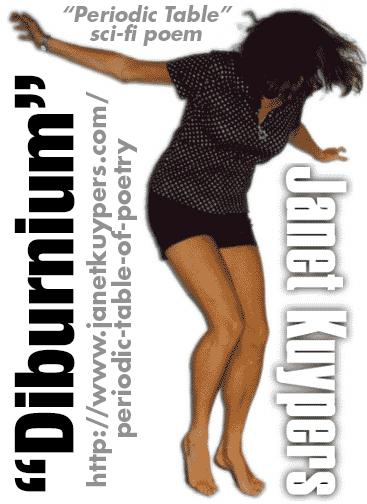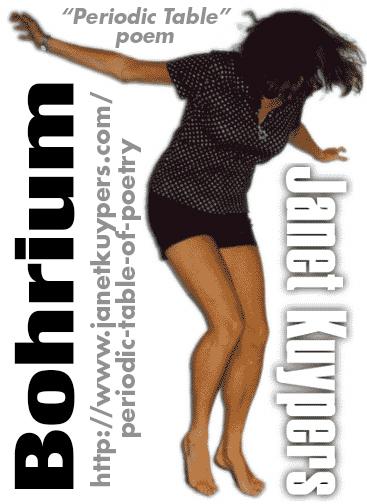Rhenium,
Janet Kuypers
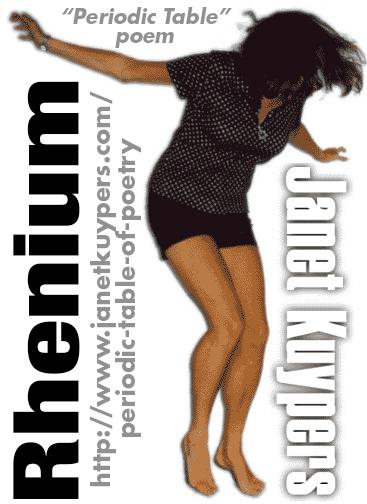
from the “Periodic Table of Poetry” series (#75, Re)
(started 8/7/14, written 8/8/14, finished 8/9/14)
Okay, so I’ve been researching
these elements in the Periodic Table,
and when I got to Rhenium
(named for the Rhine river, by the way),
I was kind of stumped.
What comes to your head
when you hear the word “Rhenium”?
Other than the fact that
“Rhenium” was an LP from Parliment
released in nineteen seventy,
I was stumped.
But hey, this element was named after the Rhine river
stretching through Europe,
but in ancient Greek Times,
they thought of the Rhine
as the outermost border
of civilization and reason,
beyond which were mythical creatures.
No lie.
But I don’t know if that mythical nature
of the unknown is what drove scientists
to search for this element,
and to learn everything they could
about what was otherwise unknown to them…
I mean, Mendeleev, the “creator”
as we know it of the Periodic Table,
postulated this element’s existence,
but it wasn’t found in his lifetime…
and it was later predicted
by an English physicist in 1913,
but it still hadn’t been discovered.
But people in different countries
claimed the discovery
through X-ray analysis,
but after a ton of dispute
this elusive element was finally found,
and as all scientists like to think,
this discovery has to mean something,
I mean, we have to use this discovery
for ssomething, so people
will appreciate our precious work!
Well they found out that Rhenium
(now that airplanes were being used more and more
by both vacationers and business travelers)
can be used with super alloys
to make jet engine parts
(well, I guess that’s cool
for the jet-setters out there…)
but, after people figured out
that putting lead in high-performance fuel
might not be good for the environment
(okay, or for people),
they found that Rhenium
could be a catalyst
for making lead-free
high-octane gasoline.
Since we now have means to travel faster and farther
(thanks to Rhenium in part, by the way),
we might not think of the Rhine as the edge of our existence
with anything beyond it being so mysterious.
But when it comes to Rhenium,
it’s one of the rarest elements in Earth’s crust
(I wonder if that’s why it took so long to discover it.)
Because of it’s radioactivity,
it’s used in the treatment of liver cancer
(and maybe pancreatic cancer too),
but with the skyrocketing price of this rare element,
scientists still worry about the potential toxicity of Rhenium.
So, maybe like the mythical creatures
beyond the Rhine the Greeks foretold,
maybe, after discovering Rhenium,
maybe we should be looking
at both the bad — and the good —
that can come out of the rare,
but radical,
and remarkable Rhenium.

